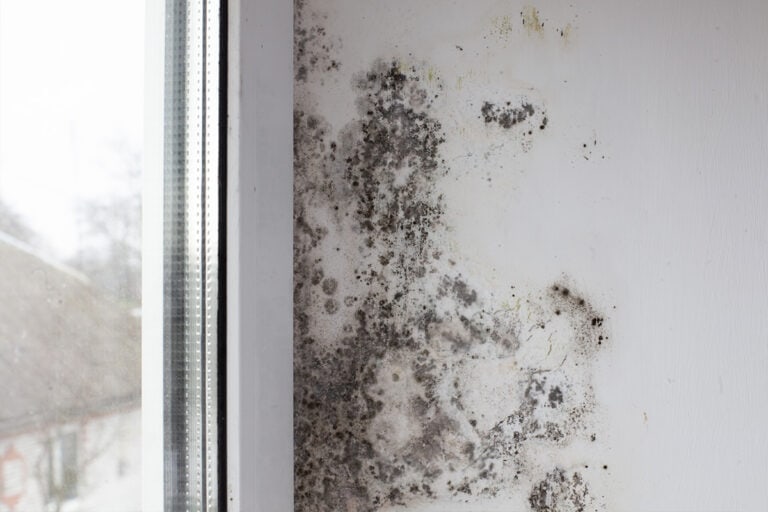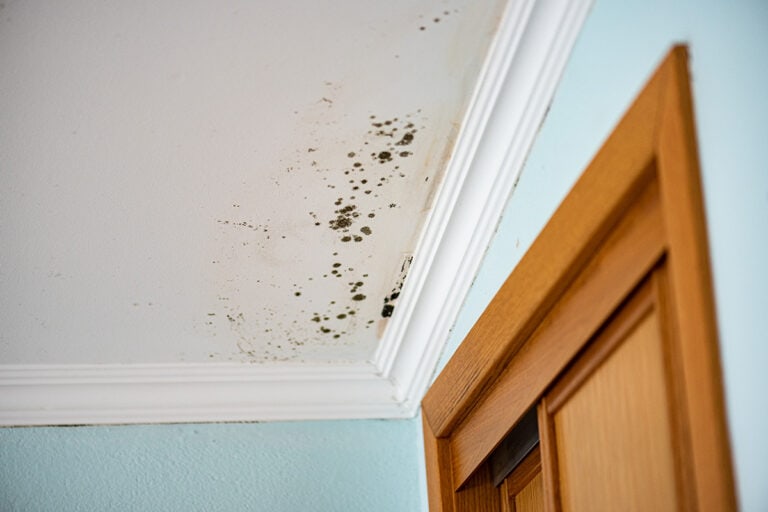Disclosure: I am compensated for purchases made through some links on this site. Click for details.
Mold law refers to the legal frameworks that address the presence of mold in public and private spaces, acknowledging the potential health hazards associated with mold exposure. As the science of mold’s effects on health has evolved, so have the laws governing landlords’ and builders’ responsibilities to prevent and remediate mold. This body of law involves standards and responsibilities for property owners, tenants, and employers to ensure safe, mold-free environments.
The health implications of mold exposure are often at the forefront of mold-related litigation. Exposure to toxic molds can lead to a wide range of health problems, from allergic reactions to more severe illnesses. Thus, understanding the legal aspects of mold contamination is essential for both property owners and occupants, providing clear guidance on how to address mold issues, and what to do if mold remediation is not properly conducted.
Key Takeaways
- Mold law encompasses the responsibilities of property owners and tenants in preventing and addressing mold contamination.
- Exposure to mold, especially toxic molds, can result in various health problems, underlining the importance of timely mold remediation.
- Legal recourse may be available to those affected by mold in properties where negligence in mold prevention or remediation is found.
Understanding Mold
Mold is a fungal growth that thrives in moist environments, affecting various surfaces such as walls, ceilings, HVAC ducts, and other building materials. It reproduces through the release of tiny spores that can become airborne and settle on surfaces, where sufficient moisture encourages their growth.
Types of Mold
Molds come in countless varieties, but some types are more commonly found indoors. Penicillium, for instance, is noted for its blue or green appearance and is often associated with water-damaged materials. Another infamous type is Stachybotrys, commonly known as black mold, which prefers high-cellulose and low-nitrogen materials like fiberboard, gypsum board, and paper.
- Cladosporium
- Aspergillus
- Penicillium
- Stachybotrys
Each type of mold can have varying impacts on indoor air quality and human health, hence the importance of proper identification and remediation.
Conditions for Mold Growth
Mold needs three key conditions to grow: moisture, a food source, and the right temperature. Indoor mold typically prefers areas with high humidity levels — above 60% — which is commonly found near leaks in roofs, windows, or pipes, or areas with flooding.
Conditions Favoring Mold Growth:
- Moisture: Water leaks, high humidity, condensation
- Food: Dust, cellulose-based materials like wood and drywall
- Temperature: Warmth, typically between 60°F and 80°F (15°C and 26°C)
Controlling indoor moisture through proper ventilation and repairing leaks is crucial to preventing and mitigating mold issues in buildings. Regular inspection of potential problem areas like window sills and bathroom ceilings can also be effective in early detection and control.
Health Implications of Mold Exposure
Exposure to mold can lead to a variety of health problems, particularly for individuals with compromised immune systems. The presence of mycotoxins, which are toxins produced by some molds, can exacerbate these health issues.
Immune System Reactions
When mold spores are inhaled, they can trigger immune system responses, especially in people with allergy sensitivities or compromised immune systems. Common allergic reactions include sneezing, itching, and watery eyes. In more severe cases, exposure to mold can result in asthmatic symptoms or allergic bronchopulmonary aspergillosis, which is a more serious condition affecting the lungs.
Respiratory Issues and Toxins
Mold exposure is closely associated with respiratory health problems. Symptoms may include a stuffy nose, sore throat, coughing, or wheezing. For those with chronic lung diseases or immune systems that are compromised, mold can become a hazardous inhabitant, causing serious lung infections. Mycotoxins released by certain molds can also lead to toxic effects which are harmful when inhaled over a prolonged period.
Identifying Mold-Related Health Problems
Healthcare practitioners often find it challenging to identify health problems directly related to mold exposure due to the wide range of symptoms that can occur. Headaches, persistent fatigue, and respiratory symptoms should prompt an investigation into possible mold exposure. Guidance exists to help clinicians recognize and manage health issues that may be related to mold in indoor environments, assisting them in making the correct diagnosis.
Legal Aspects of Mold Contamination
Mold contamination can lead to complex legal disputes, particularly with regards to property damage and health implications. These cases often involve multiple parties and require a precise understanding of both legal responsibilities and the scientific nature of mold growth.
Mold Litigation Overview
In mold litigation, a plaintiff typically alleges property damage or health problems due to mold exposure. These legal actions are rooted in tort law, focusing on claims such as negligence or breach of warranty. Key to these cases is establishing a causal link between mold presence and the alleged damages. They often require detailed documentation of mold proliferation and evidence that the defendant’s actions or inactions contributed to the harmful conditions.
Roles and Responsibilities
Landlords and property owners have a legal duty to provide a habitable environment, free from hazardous conditions like mold. When this duty is breached, tenants or homeowners may hold the property owner liable. Conversely, tenants have the responsibility to report mold issues in a timely manner and may be held accountable for exacerbating an issue through neglect. It is crucial for all parties to understand and adhere to state-specific laws governing mold contamination and remediation.
Related Content: I Have Mold in My Apartment: Effective Remediation Strategies
Expert Witnesses in Mold Cases
Expert witnesses play a pivotal role in mold cases, providing the technical analysis necessary to support or refute claims related to mold-induced harm. These experts, often specialists in fields like mycology, toxicology, or industrial hygiene, offer testimony on the origin, type, and health impacts of mold found on the property. Their assessments can influence the determination of liability, the extent of property damage, and the evaluation of health claims in a lawsuit.
Mold Remediation Strategies
Mold remediation is a critical process for maintaining property integrity and health standards. The strategy encompasses two essential components: removing mold from properties and addressing the underlying moisture problems that support mold growth. Proper adherence to these strategies ensures a healthier environment inside homes and buildings.
Removing Mold from Properties
Once a mold issue has been identified, prompt removal is paramount. Surfaces like walls and ceilings must be cleaned with appropriate antifungal agents to get rid of mold effectively. In cases where mold has penetrated deeply into porous materials, the affected areas may need to be removed and replaced to prevent future growth.
Dealing with Moisture and Leaks
Controlling moisture levels is the most effective preventive measure against mold. Any signs of leaking pipes, condensation, or general water intrusion should be inspected immediately and the source of the leak repaired. Regular monitoring of plumbing systems and proper ventilation can drastically reduce the likelihood of mold reoccurring.
Controversies and Misconceptions
In discussions about mold in legal contexts, there is a blend of legitimate concerns and widespread misunderstandings. Distinctions between harmless and toxic molds are often at the center of legal debates, creating a fertile ground for controversies.
Myths About Mold
1. Myth: All mold is toxic:
While certain molds can produce toxins, not all molds are inherently toxic. The belief that all mold found in homes or buildings is dangerous can lead to unnecessary panic and litigation. Efforts to better educate the public about the varying levels of harm associated with different types of mold have been pivotal in dispelling this myth.
2. Myth: Mold is always a result of neglect:
Mold can be the result of numerous factors, including construction defects or unavoidable natural events that are no one’s fault. Legal disputes often arise when property owners or managers are wrongfully blamed for mold presence despite reasonable maintenance efforts.
3. Myth: Mold can always be seen or smelled:
Mold is sometimes not immediately noticeable, which leads to the misconception that if it cannot be seen or smelled, it is not there. This can complicate legal cases, as mold that goes undetected can later become a significant issue, sometimes impacting property value or health with little to no initial evidence of its presence.
4. Myth: Black mold is the deadliest form of mold:
While certain strains of black mold (Stachybotrys chartarum) are associated with serious health hazards, the color of mold does not solely determine its toxic potential. Legal cases may hinge on identifying the exact species of mold present, which requires expert analysis rather than assumptions based on color.
By understanding the realities behind these myths, parties involved in mold litigation can approach cases with a more informed perspective, leading to fairer outcomes.
Conclusion: Mold LAw
In conclusion, understanding and addressing mold contamination involves a comprehensive approach that encompasses legal knowledge, health awareness, and proactive property management. For tenants and landlords alike, recognizing the rights and responsibilities outlined in mold law is crucial for maintaining safe and healthy living environments. By adhering to the guidelines provided, individuals can effectively navigate the complexities of mold remediation, legal disputes, and prevention strategies.
Key Takeaways:
- Mold Awareness: Recognize the health risks associated with mold exposure, especially from toxic molds like Stachybotrys (black mold), and the importance of prompt remediation.
- Legal Knowledge: Understand the legal framework surrounding mold law, including tenant rights and landlord responsibilities, to ensure compliance and protect all parties involved.
- Proactive Measures: Implement strategies to prevent mold growth by controlling moisture levels, repairing leaks promptly, and ensuring proper ventilation.
Strategies for Effective Mold Management:
| Strategy | Description |
|---|---|
| Regular Inspections | Conduct routine checks of potential problem areas to detect early signs of mold. |
| Immediate Action | Address moisture issues and leaks as soon as they are identified to prevent mold growth. |
| Professional Remediation | Seek expert assistance for mold removal and remediation to ensure thorough treatment and prevent recurrence. |
As we navigate the intricacies of mold law and its implications on tenant-landlord relationships, let’s commit to fostering safer, healthier living spaces through informed action and mutual responsibility.



